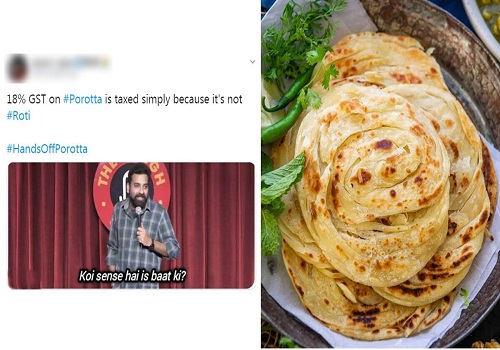As we know there is various confusion going on and many people are confused as to why parotha/ paratha and roti are treated differently under GST and why is GST on parota is 18% whereas GST on roti is 5%.
This was a trending news and many celebrities were even sharing the news article when they had nothing to do with it.
It all started from an advance ruling in case of M/s ID Fresh Food (India) Pvt. Ltd. by authority of advance ruling in Karnataka dt. 22.05.2020.
The applicant is a company involved in preparation and supply of wide range of ready to cook, fresh food including idli and dosa batter, parotas, chapatis etc. The question asked in advance ruling was as under:
“Whether the preparation of Whole Wheat Parota and Malabar parota be classified under heading 1905, attracting GST at the rate of 5%?”
The applicant said that whole wheat parota and malabar parota is available in ambient and frozen form with a shelf life of minimum 3 days and maximum 7 days.
After adding all the ingredients the product will be subjected to heat treatment on a pan for making it available for consumption. In the instant case the product is made up of wheat or maida flour, refined oil, salt and vegetable fat and is not readily consumable but to be heated before consumption.
The applicant intends to place reliance on ruling passed by Advance ruling authority, Maharashtra in case of M/s signature international foods India private ltd. wherein it is held that paratha and paratha wraps are covered by the scope of entry 99A of notification 34/2017 – Central tax (rate) Dt. 13.10.2017.
In view of above the applicant contends that their product merits classification under Chapter heading 1905. Further applicant contended that it’s product should not be covered under residual entry based on various grounds.
Authority made the following observation:
The product was not readily consumable but need to be heated before consumption.
The applicant contended that their products merit classification under chapter heading 1905. However it could be inferred that product covered under above heading are mainly made from product covered under chapter 11 i.e. wheat flour, which are completely cooked food and ready for consumption.
In the instant case the impugned product are admittedly not ready for consumption but need to be heated for consumption. Thus the impugned product do not merit classification under heading 1905.
For a product to be classified at 5% GST it should fulfill 2 conditions (1) it should either be classified under heading 1905 or 2106 and (2) they must be either khakhra, plain chapati or roti. For the first condition the product gets classified under 2106 and as far as second condition is concerned the impugned product has been described as “parota” which is not covered above.
Further, all the above preparations are completely cooked preparations and do not require any further processing for human consumption and hence are ready to eat food preparations. Thus, the impugned product of applicant has been rightly classified under 2106 and taxed at 18%.
To read full ruling CLICK HERE.
Further CBIC has also commented on the above advance ruling and said that:
Such frozen and preserved parota is not like a plain roti, khakra etc. Accordingly, the AAR held that such frozen and preserved parota would not be entitled to concessional GST rate as available to roti (plain roti, khakra etc attracts concessional GST rate of 5% GST).
It has been held by AAR that frozen and preserved parota would attract GST at the rate of 18%.
Thus it is clear that this ruling only applies for frozen and preserved parota and ready to eat parota. Hence ready to eat parota would still attract 5% GST.
To read the tweet CLICK HERE.
This article is just for information purpose and are personal views of the author. It is always advisable to hire a professional for practical execution or you can mail us. If you need assistance you can ask a question to our expert and get the answer within an hour or post a comment about your views on the post and also subscribe to our newsletter for latest weekly updates.













